Monterrey , Nuevo León, Mexico
November 11-13
Monterrey sits in a valley that is entered through a mountain pass . It revealed itself to us with campfire coal lights as Highway 85 began a downward descent. On the edge of town we stopped for gas at a Pemex station, a government-run chain that is without competition. The price of gas is regulated (about $3 a gallon for premium) and dispensed by attendants in green coveralls.
Friday night traffic was heavy and we circled a few times before finding our hotel. We stayed in the Gran Hotel Yamallel in the old section of town. The area is deserted at night, except for the people frequenting the dance clubs that filled the area. We secured the motorcycle in the hotel's garage before heading out to a dinner of quesadillas at a small diner down the street.
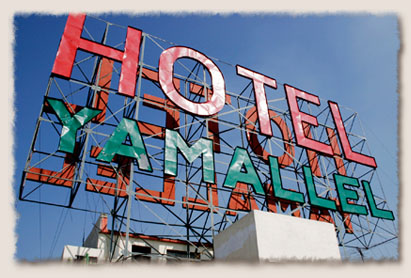
| |
The large advertising sign on the roof of our hotel. |
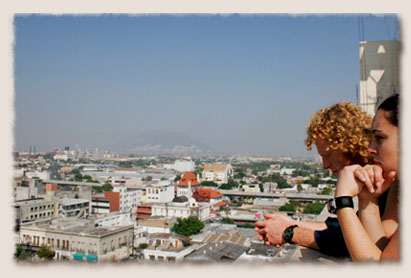
| |
The view from the roof of the Gran Hotel Yamallel. Heavy haze settles into the city in the mornings, hiding the Sierra Madre mountains. |
The next morning, Monterrey appeared in the hazy, smog-filtered dawn light. A sprawling metropolis, Monterrey is held in check by the surrounding mountains, on which shanty towns crawl up the slopes like mildew on a shower wall. Only 150 miles from the border, the town shows its proximity to the U.S. , with Burger Kings, Days Inns and kids wearing baggy pants and gold chains. Cars pass by on the street with gold spinner rims, blaring rap music. The town's main shopping area is a street with strip mall like air-conditioned shops, filled with balloon sellers, street vendors and restaurants where the waitresses dress like nuns.
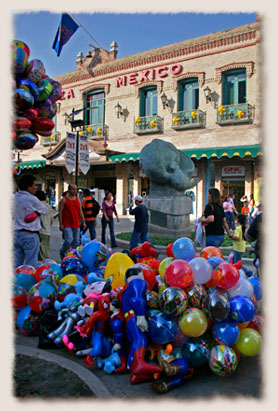
| |
The Zona Rosa was the busiest part of Monterrey with street vendors trying to sell toys, watches and food. |
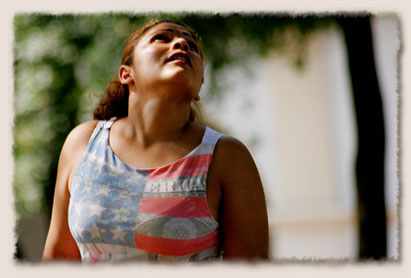
| |
A girl glances into the trees at Plaza Zaragoza looking at the birds roosting in the trees waiting for a crumb to be thrown. Monterrey is Mexico's third-largest city and being so close to the border has made it more Americanized than other cities. |
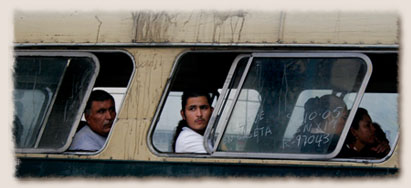
| |
Buses are a popular means of getting around town, as are the taxis, which are green instead of yellow like in the U.S. |
We walked around with the laptop, trying to find a place to write, heading downtown into a series of parks and plazas. In the first place we stopped, we were approached by a beggar, who pleaded for a peso in Spanish. We moved on. In the Plaza Zaragoza we sat down to write and found that the laptop was picking up a wireless internet signal. We drew curious glances, as Holly chats online with her sister Robin. Nearly 2,000 miles apart, we type messages back and forth as a parade of children march by in traditional native costumes, drums pounding. We spent most of the afternoon writing and watching people under the Beacon of Commerce, a large concrete sculpture that celebrates Monterrey 's status as the second-largest industrial city in Mexico .
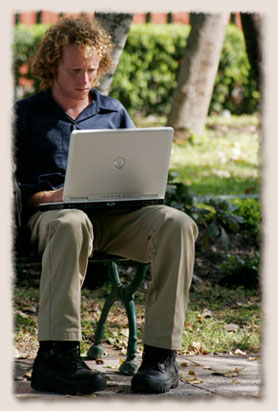
| |
Jeremiah Knupp, a.k.a. Wireless Mooch, working on a journal entry in Plaza Zaragoza. |
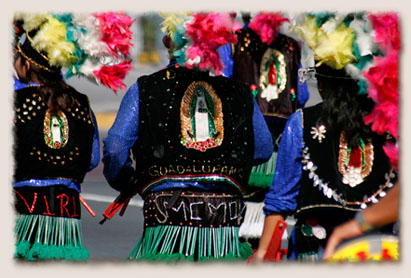
| |
A group of children dressed in traditional costumes paraded around the Plaza Zaragoza. |
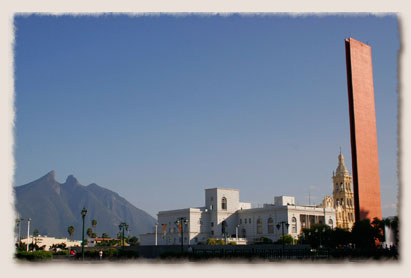
| |
Faro del Commercio (right) or Beacon of Commerce, designed by architect Luis Barragan, sits in front of the Contemporary Art Museum and a cathedral. The saddle-shaped mountain peak of the Sierra Madres is called the Cerro de la Silla. |
On Sunday morning we've been on the road for a week. We searched for a wireless signal to send our pictures and journals, driving around the downtown streets and stopping to check the laptop. There was none to be found. We headed back to Plaza Zaragoza, which was clogged with the crowds from a cancer benefit run. Holly walked around the park, checking for a signal and drawing crowds of curious children. We were unable to find a signal, so we packed up and headed out of town.
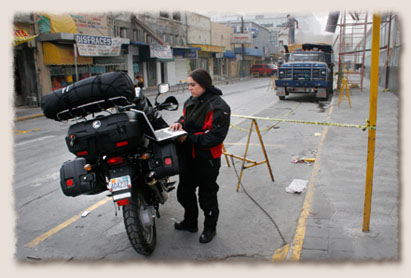
| |
Our luck ran out when we tried to find a wireless signal the next day to upload our journal entries. We tried several street corners and even went back to the plaza where we had connected the day before, but none were to be found. |
|